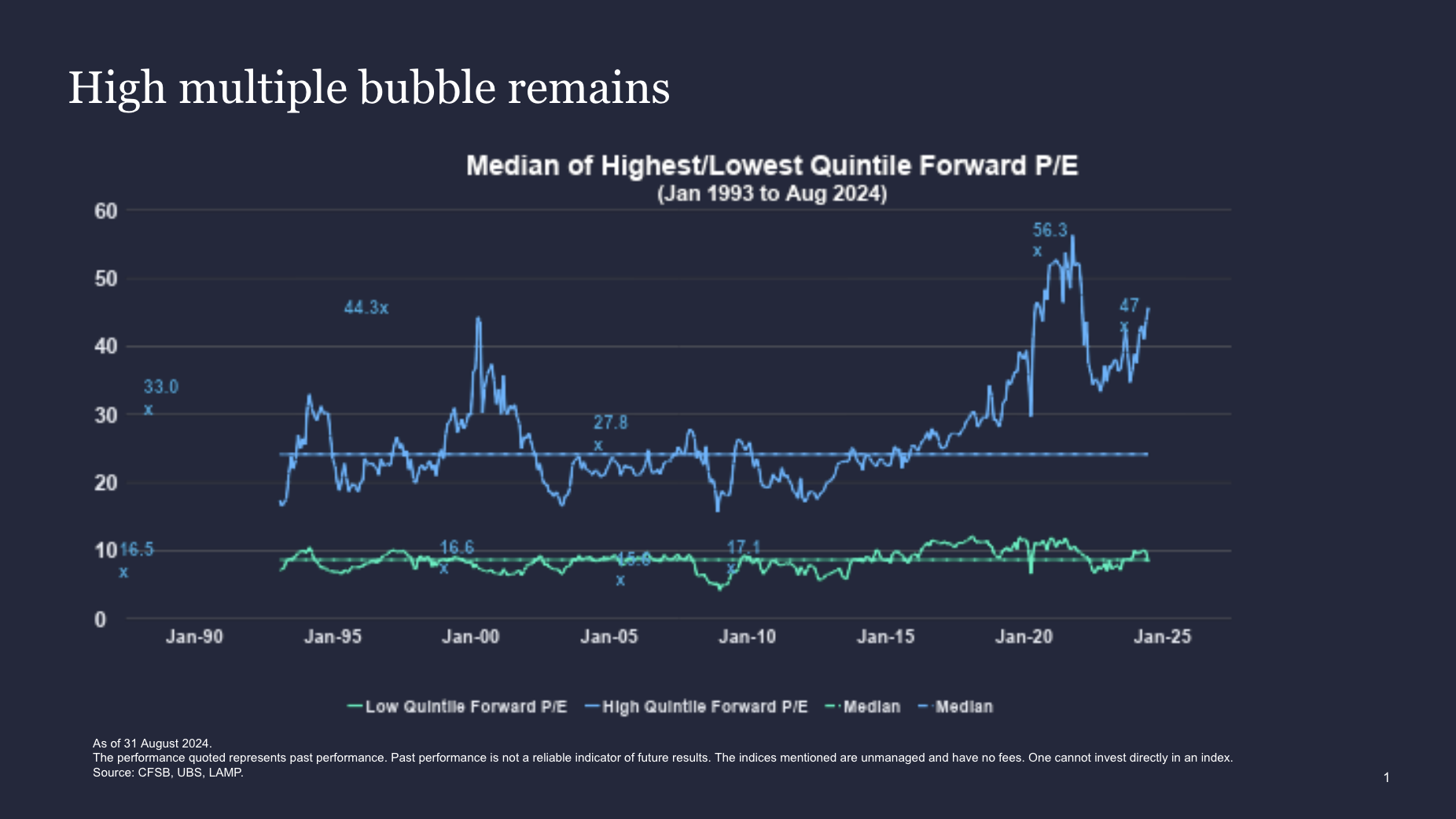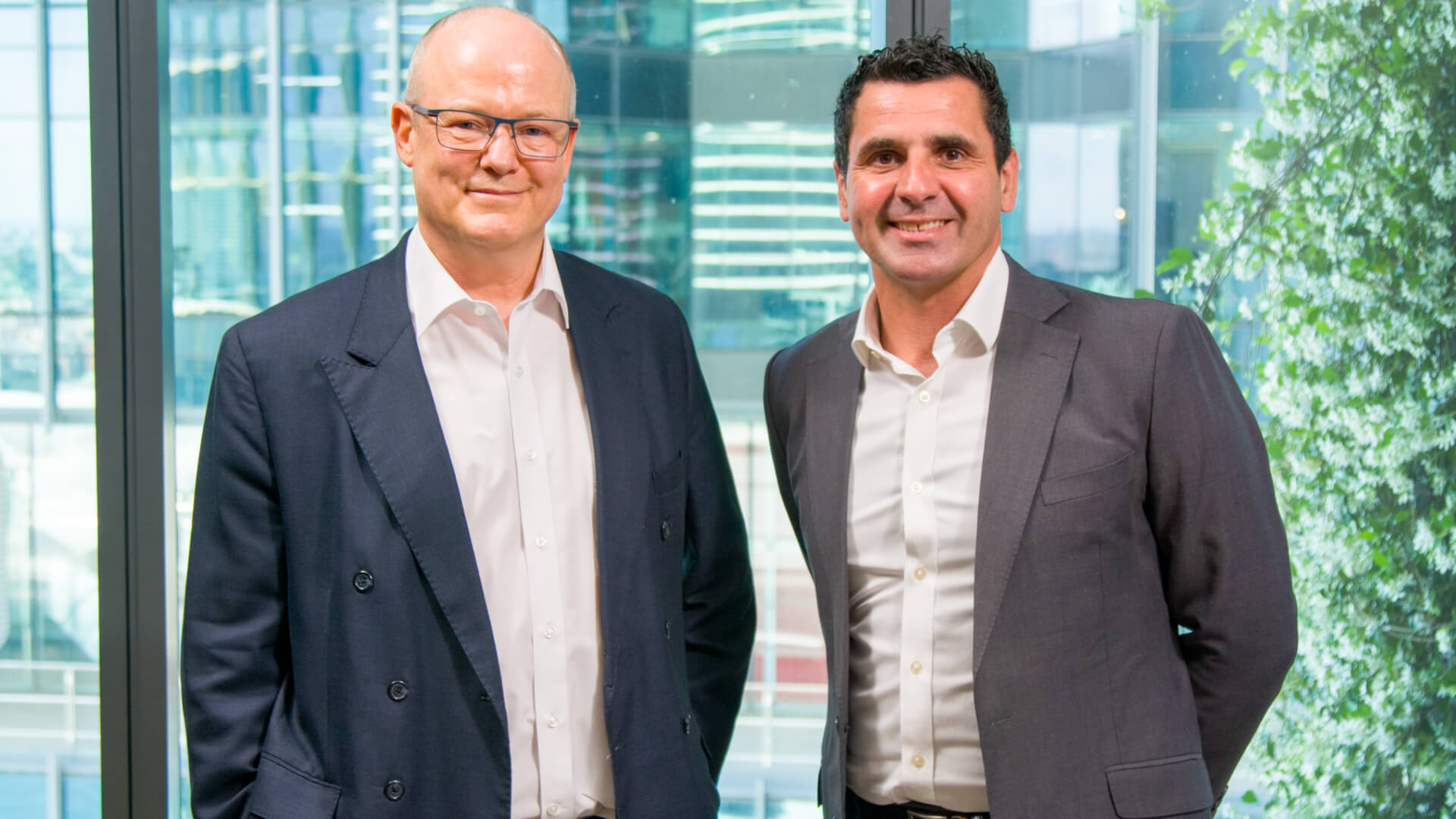Hofflin: You’re getting a second chance
Note: This interview was recorded on the 17th of October 2024.
The bulls are back in charge. Growth assets are marching higher, and many investors will look at their portfolios with a sense of relief or even a smile. A quick glance at the 1-year performance numbers for both Australian and Global fund managers confirms what we all know - growth is back in vogue.
Data supports the weight of cash moving back into equities, with the latest Bank of America Fund Manager survey revealing cash levels have dropped to the lowest level since the heady times of 2021.
The forward P/E multiple on the ASX for the most expensive stocks is currently 47x. For context, that is higher than the peak in 2000 preceding the dot-com crash and is not too far off the peak of 56.3 times in 2021, which was powered by the stimulus-fuelled COVID rally.

These peaks were followed by savage drawdowns in high-growth equities and the funds invested in them. The scars of 2022 still linger, with 3-year numbers on many growth managers lagging in the low to mid-single digits.
So, if you're like me and you are looking at your portfolio wondering if the good times will roll on as well as how you might consolidate on them before they all turn to custard, then it might be worth considering the views of Dr Philipp Hofflin, Portfolio Manager/Analyst at Lazard Asset Management.

Correcting the skew
The Lazard Australian Equity Team are a die-in-the-wool Value manager who never departs from its approach. The firm's local funds, along with many value managers, endured a tough period post-GFC as rates headed steadily lower. But Hofflin is no perma-bear, and many will recall his table-thumping calls in late 2020 on the opportunity in the unloved energy sector.
Contrarian or value opportunities such as this helped propel a number of Lazard's funds to the top of the performance tables in 2021, 2022 and 2023. On a 3-year time frame, Lazard's Select Australian Equity Fund remains in the top five best performers in the Livewire Funds database.

So why does this matter? When I spoke with Hofflin, he was frank in his assessment that, right now, it is hard to find table-banging long ideas. That is mainly due to the dynamic I explained above, where multiple expansions have pushed valuations to heady levels. However, what is true is that Value managers have shown their worth in the periods following market meltdowns with the period after the dot-com bubble and more recently after the reset following the COVID boom.
"The market is really quite expensive. There have been times when I have come in and thumped the table and said, 'You really need to look at this; you need to be there back in 2020', you'll recall. At the moment, I'm going to thump the table and say this is where you should not be." Hofflin argues.
With market multiples rapidly approaching the peak reached in 2022, Hofflin believes investors partying in the AI-fuelled rally are being given a second chance to 'correct the skew' in their portfolios.
"As people found from 2021 to 2023, what mattered was where you weren't. What didn't you get caught in," he adds.
There's little doubt that the rally on the ASX has been fuelled by exuberance about AI. The IT sector has been leading the charge, notching up 37% gains in the year to date.
However, the excitement has not been limited to the tech sector. Extreme valuations are evident in the largest stocks on the ASX.
Commonwealth Bank of Australia (ASX: CBA) is a case in point, with the stock trading on a 24x forward P/E multiple. This figure is the highest it has been in 50 years, according to Hofflin, whose funds held an 18% underweight to the banks as of September 30.
"Last time I checked Jefferies' global database of all the listed banks, emerging market and developed, it was literally the most highly-priced bank on the planet," Hofflin notes.
CBA is also the sixth-largest, meaning the growth opportunity is limited given its market position and the smaller market opportunity in Australia relative to global peers, such as JP Morgan, which trades on half the multiple of CBA with a higher return on equity and better growth prospects.
So, what explains these high multiples? Hofflin is baffled by this question, but one explanation he has drawn is that there is a binary choice between owning banks and miners when investing in the S&P/ASX 200.
The recent switch from banks to miners saw shares in CBA fall $10 on the back of some positive rhetoric coming out of China. Hofflin says this is nonsensical because good news out of China is good for miners but, to a lesser extent, is also good for companies such as CBA.
"Weak news from China is bad for resources, but it is also, to a lesser extent, bad for banks … it would make sense if resources fell more and banks less. But it doesn't explain a huge rally in bank shares because it is bad for Australia."
"It could be money flows - that's the best explanation I've heard. It's money moving from active to passive and various things like that, but it's not the underlying valuation," he says.
Look for opportunity not size
Despite this dynamic, Hofflin says the concentration of banks and resources stocks in the S&P/ASX 200 is not unique to Australia and highlights that the Taiwanese is even more concentrated than the local market..
According to Hofflin, the way to overcome extreme concentration is to invest in stocks based on opportunity rather than size.
"80% of the opportunities come outside the top 20 stocks, so we're naturally overweight the mid-cap stocks," he explains.
His view is that within the top 200 stocks, there are plenty of companies with sufficient size and liquidity to build a sensible portfolio.
Three names included in the Lazard Select Equity Fund Portfolio are Nickel Industries (ASX: NIC), which Hofflin says has a very good operation in a challenging commodity.
South32 (ASX: S32) has recently been added back to the portfolio, and the fund has also built a small position in coal miner Coronado Global Resources (ASX: CRN). He sees improving production costs and a favourable long-term outlook for metallurgical coal, primarily driven by demand from India.
To watch the full interview please click on the player at the top of this wire.
Time codes
- 0:00 - Introduction
- 0:34 - Investing against a backdrop of low growth and falling interest rates
- 6:17 - Where is the value looking to 2025
- 11:45 - Concentration on the ASX
- 14:36 - Allocating across Banks and Resources
- 17:25 - Opportunities outside the ASX20
- 19:38 - Will China’s stimulus work?
- 21:52 - Rio’s lithium play - no value added
4 stocks mentioned
1 fund mentioned
1 contributor mentioned


